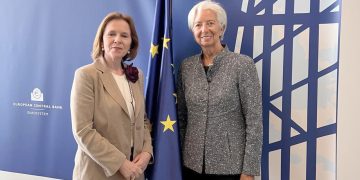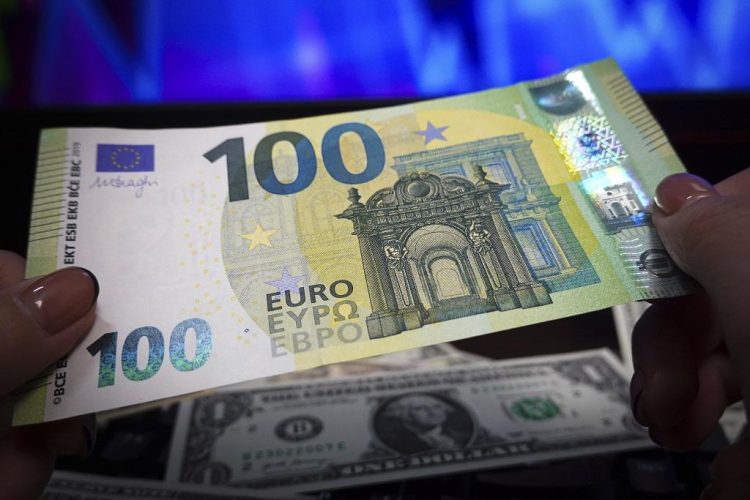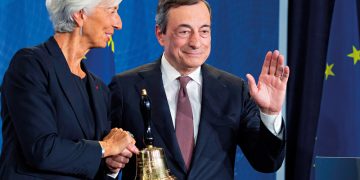The European Union’s Recovery Fund, officially known as the NextGenerationEU initiative, was launched in 2020 as a response to the devastating economic fallout from the COVID-19 pandemic. With a budget of €750 billion, the fund aims to stimulate recovery, strengthen European economies, and bolster the EU’s resilience in the face of future challenges. The stakes are high for the continent, which has faced a myriad of economic, political, and social hurdles over the past decade, from the sovereign debt crisis to the ongoing geopolitical tensions. As we move into the post-pandemic era, the key question remains: can the EU Recovery Fund effectively revitalize Europe’s economies and set the stage for a more prosperous and sustainable future?
Introduction: The EU’s Recovery Fund and Its Goal of Rebuilding the Economy After the Pandemic
The COVID-19 pandemic has had an unparalleled impact on the global economy, and Europe was no exception. The EU faced deep recessions across member states, widespread job losses, disruptions to trade and travel, and significant increases in public debt. In response, European leaders introduced the Recovery Fund as part of a broader fiscal response to counterbalance the economic damage caused by the pandemic.
NextGenerationEU is built on the premise that the crisis could be used as a catalyst for transformation. The fund focuses on three main pillars: supporting the immediate recovery, building a greener and more digital economy, and increasing the EU’s long-term resilience. This multi-pronged approach seeks to modernize Europe’s economic structure by funding projects in areas like clean energy, digital infrastructure, and social equality, while also providing a much-needed boost to member states’ economies as they recover from the pandemic.
One of the defining features of the Recovery Fund is its focus on both solidarity and reform. Unlike previous EU funding initiatives, the Recovery Fund is designed to allow wealthier countries to support those with weaker economies. It also emphasizes that recipients must implement structural reforms to ensure that funds are used efficiently and that Europe’s long-term economic future is secure.
With the funds now being distributed to various EU member states, it is time to assess how well the initiative has worked and what steps are needed to ensure its success moving forward.
Progress So Far: How Effective the Fund Has Been in Addressing Europe’s Challenges
Since the adoption of NextGenerationEU, the EU has seen significant progress in its recovery efforts, although challenges remain. As of early 2025, billions of euros have already been allocated to the recovery plans of various EU member states. A large portion of these funds has been earmarked for infrastructure projects, including green energy initiatives and digital transformation, both of which are seen as key to future-proofing the European economy.
Economic Stimulus and Job Creation
The funds have provided immediate economic stimulus in several EU countries, helping to mitigate the worst effects of the pandemic. For example, countries like Italy and Spain, which were hit hardest by the pandemic, have used Recovery Fund money to fund healthcare systems, public services, and job creation schemes. These measures have provided a much-needed cushion for citizens and businesses, while also offering a lifeline to the most vulnerable sectors of the economy.
In some countries, the Recovery Fund has been credited with helping to stabilize labor markets. Unemployment rates, which skyrocketed during the peak of the pandemic, have been reduced in part due to the measures financed by the fund. For instance, Spain has used its portion of the Recovery Fund to implement wage subsidies, job retraining programs, and grants for small businesses, which have helped to preserve jobs and support economic activity.
Green and Digital Transformation
The Recovery Fund is also making significant strides in driving Europe’s green and digital transformation. The EU’s commitment to becoming climate neutral by 2050 is at the heart of this shift, and NextGenerationEU is designed to accelerate that process.
A major portion of the fund is directed toward clean energy projects, such as the development of renewable energy infrastructure, electric vehicle adoption, and energy efficiency programs. For example, Germany has earmarked a substantial share of its Recovery Fund allocation for the expansion of wind and solar energy, as well as the modernization of its energy grid.
Similarly, digital transformation is another key priority for the EU Recovery Fund. The pandemic has underscored the importance of digital infrastructure for businesses, schools, and healthcare systems. The fund’s digital component focuses on the rollout of 5G networks, the expansion of broadband access to rural areas, and the development of digital skills to ensure that Europe can compete in the global digital economy.
These initiatives not only address immediate recovery needs but also lay the groundwork for long-term growth and sustainability.
Strengthening European Integration
Beyond the economic impact, the Recovery Fund has also played a role in strengthening European integration. It represents a rare moment of fiscal solidarity among EU member states, with wealthier countries like Germany and France agreeing to pool resources and provide grants and loans to less prosperous nations. This collective approach has fostered a sense of unity and reinforced the idea that Europe’s future depends on mutual support.
However, while the fund has been a powerful symbol of European unity, the challenge of ensuring that the money is distributed equitably and effectively across the region remains.
Structural Changes: Reforms That Could Make the Fund More Effective
Although the Recovery Fund has achieved significant progress, its full potential may not be realized without certain structural changes and refinements. The implementation of the fund has highlighted a few key challenges that must be addressed for it to be more effective in revitalizing Europe’s economies.
Streamlining Bureaucracy
One of the main criticisms of the Recovery Fund has been the slow pace of disbursement. The fund’s complexity, with its requirements for detailed national plans and oversight mechanisms, has led to delays in the allocation of funds. In some cases, bureaucratic hurdles have slowed down the execution of key projects, frustrating governments and businesses that were eager to get started.
To improve efficiency, it may be necessary to streamline the approval and distribution processes, making it easier for countries to access funds quickly and use them effectively. Simplifying the application process and providing more flexibility in how funds can be spent would also help countries respond more rapidly to emerging challenges.

Strengthening Oversight and Accountability
Given the scale of the Recovery Fund, ensuring proper oversight and accountability is critical. In some cases, concerns have been raised about how effectively funds are being managed at the national level. While the EU has set up mechanisms to monitor progress, additional transparency and reporting requirements may be necessary to ensure that funds are spent wisely and that countries deliver on their reform commitments.
More robust auditing processes, coupled with clear benchmarks for measuring success, could help identify areas where funds are being misallocated or wasted. In this context, encouraging local participation and involving stakeholders in decision-making processes could also help ensure that the projects funded by the Recovery Fund are genuinely beneficial to communities.
Fostering Regional Cooperation
To make the Recovery Fund more effective, there needs to be greater regional cooperation among EU member states. Although the fund aims to foster unity, some countries have been more successful than others in leveraging the funds for growth. By promoting knowledge sharing and collaboration between member states, the EU can ensure that all countries benefit from the collective investment in the recovery process.
For example, countries that are further along in their green and digital transformation efforts could share best practices with those that are still in the early stages. Similarly, businesses across the EU could collaborate on innovation projects, pooling resources and expertise to tackle common challenges and promote European competitiveness in the global market.
Challenges Ahead: Political and Economic Obstacles to Full Recovery
Despite the positive developments, several obstacles remain that could prevent the Recovery Fund from fulfilling its potential.
Political Instability
Political fragmentation in several EU countries could hinder the successful implementation of the fund. Governments may face opposition from political parties that disagree with the reforms proposed in exchange for receiving Recovery Fund money. In some cases, political instability, such as elections or changes in government, could disrupt the continuity of recovery efforts, delaying the progress of key projects.
Economic Unevenness
While the Recovery Fund aims to support all EU member states, there are still significant disparities between the economic capabilities of different countries. Southern European countries, such as Greece, Spain, and Italy, continue to face higher debt levels and unemployment rates compared to their northern counterparts. As a result, it may be more challenging for these nations to fully absorb and effectively use the funds provided by the EU.
Additionally, the global economic environment remains uncertain, with risks related to inflation, supply chain disruptions, and geopolitical tensions. These external factors could have an outsized impact on Europe’s recovery and the effectiveness of the EU’s fiscal response.
Long-Term Sustainability
Lastly, while the Recovery Fund provides a necessary boost, it is only a temporary solution to Europe’s long-term challenges. Ensuring that the economic recovery is sustainable requires structural reforms at the EU level, such as deepening the single market, improving fiscal integration, and addressing demographic challenges such as an aging population.
Conclusion: A Path Forward for Europe
The EU Recovery Fund represents a monumental effort to rebuild Europe’s economy after the pandemic. While significant progress has been made, the path to full recovery is still fraught with challenges. By addressing bureaucratic inefficiencies, strengthening oversight, and fostering regional cooperation, the EU can unlock the full potential of the Recovery Fund. As the fund continues to support the green and digital transformations, Europe has the opportunity to emerge from this crisis stronger, more integrated, and better prepared for the challenges of the future.



































